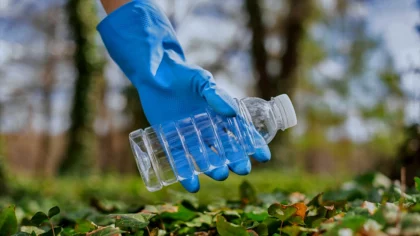How PET Recycling Reduces Environmental Impact and Conserves Natural Resources

Polyethylene terephthalate, widely known as PET, is a type of plastic commonly used in beverage bottles, food containers, and packaging materials. Its lightweight, durable, and versatile nature makes it one of the most popular plastics worldwide. However, the extensive use of PET Recycling contributes to significant environmental challenges, particularly when it is discarded irresponsibly. Recycling PET has emerged as a critical solution to reduce environmental impact, conserve natural resources, and support sustainable production and consumption practices.
The process of PET recycling begins with the collection of post-consumer and post-industrial PET waste. Proper collection and segregation are essential to ensure the quality of recycled materials. PET bottles, containers, and packaging must be separated from other plastics and contaminants such as metal caps, labels, and food residues. Efficient collection systems, including curbside recycling programs, dedicated drop-off points, and industrial waste recovery, facilitate the gathering of PET waste on a large scale. Clean and well-sorted PET significantly improves the efficiency and quality of the recycling process.
Once collected, PET undergoes sorting and cleaning. Advanced technologies like near-infrared (NIR) scanners, automated optical sorting, and density separation help distinguish PET from other plastic types. Cleaning removes impurities, including labels, adhesives, and residues, ensuring that the recycled material meets the required standards. After cleaning, PET is shredded into flakes or pellets, making it suitable for manufacturing new products. This process reduces waste volume, improves material handling, and prepares PET for transformation into high-quality recycled materials.
Recycling PET offers significant environmental benefits. One of the primary advantages is the reduction of plastic waste in landfills and natural habitats. PET is highly durable and can persist in the environment for hundreds of years, posing risks to wildlife and ecosystems. By diverting PET from landfills and waterways, recycling helps prevent pollution and protects both terrestrial and marine ecosystems. Furthermore, recycled PET reduces the need for new plastic production, which relies heavily on petroleum-based raw materials. Conserving these resources minimizes the environmental footprint of plastic manufacturing and promotes more sustainable consumption patterns.
Energy savings are another critical benefit of PET recycling. Producing new PET from virgin materials requires substantial energy and generates greenhouse gas emissions. In contrast, using recycled PET significantly lowers energy consumption and carbon emissions. Studies indicate that recycling PET can reduce greenhouse gas emissions by up to 50% compared to producing virgin PET. These energy and emission savings make PET recycling a vital component of climate action strategies, contributing to global efforts to mitigate environmental degradation.
Recycled PET also supports the principles of a circular economy. Instead of following a linear model of production, use, and disposal, a circular economy emphasizes keeping materials in use for as long as possible. Recycled PET can be used to manufacture new bottles, packaging materials, textiles, and construction products. By reintroducing PET into production cycles, the demand for virgin plastic decreases, and resources are conserved. This closed-loop system creates economic opportunities while minimizing environmental harm, encouraging sustainable industrial practices.
Consumer participation is essential for successful PET recycling. Individuals can contribute by segregating recyclable PET materials, rinsing containers to remove residues, and supporting products made from recycled PET. Governments and organizations also play a vital role in promoting recycling through infrastructure development, policies, and incentives that encourage responsible plastic management. Collaborative efforts among consumers, manufacturers, recyclers, and policymakers enhance the efficiency and impact of PET recycling initiatives.
In conclusion, PET recycling plays a crucial role in reducing environmental impact and conserving natural resources. By enabling proper collection, sorting, cleaning, and processing, PET waste can be transformed into valuable raw materials for new products. This process minimizes landfill usage, reduces greenhouse gas emissions, conserves petroleum-based resources, and supports a circular economy. Recycling PET demonstrates how responsible material management can protect ecosystems, promote sustainability, and create economic value, offering a pathway toward a more environmentally conscious future.

